J20 Jet Fighter - Chgdu J-20 (Chinese: 歼-20; pinyin: Jiān-Èrlíng), also known as Mighty Dragon (Chinese: 威龙; pinyin: Wēilong),
The aircraft has three variants: the initial production model J-20A, the thrust vectoring J-20B, and the J-20S, a capable two-seat aircraft.
J20 Jet Fighter
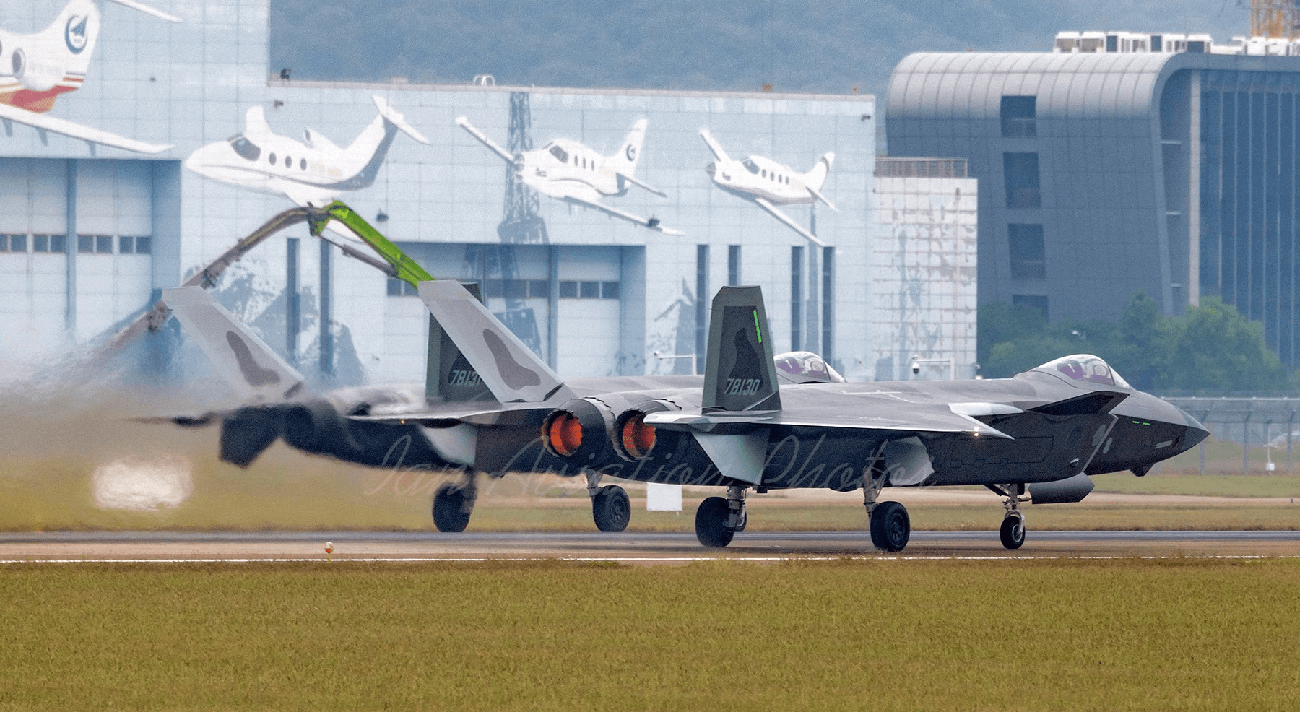
China has become the second country in the world and the first in Asia to land an operational stealth aircraft.
J 20b 'mighty Dragon': A Complete Stealth Fighter?
The J-20 originated from the J-XX program in the late 1990s. In 2008, the PLAAF supported Chgdu Aerospace Corporation's proposal, Project 718; Sang's proposed aircraft is larger than the J-20.
Chgdu previously used the double-canard configuration on the J-9, its first and canceled design in the 1970s, and the J-10.
In 2009, a PLAAF official revealed that the first flight was expected in 2010-11, with a test date of service by 2019.
On December 22, 2010, the first J-20 prototype performed a high-speed taxi test outside Chgdu Aircraft Design Institute (CADI).
Experts: China Deploying J 20 Fighters In Asia To Counter Us F 35s
The first prototype was painted with the number "2001". In May 2012, the second prototype was flown at the CADI facility.
Some changes were made to the third J-20 prototype, numbered "2011", which made its maiden flight in March 2014.
The new airframe features a modified diverterless supersonic inlet (DSI), stealth coatings, streamlined underwing fairing and a redesigned vertical stabilizer. Analysts noted new tools and equipment for multi-role operations, such as integrated targeting pods for precision-guided munitions, and six additional passive infrared ssors detectable around the aircraft.
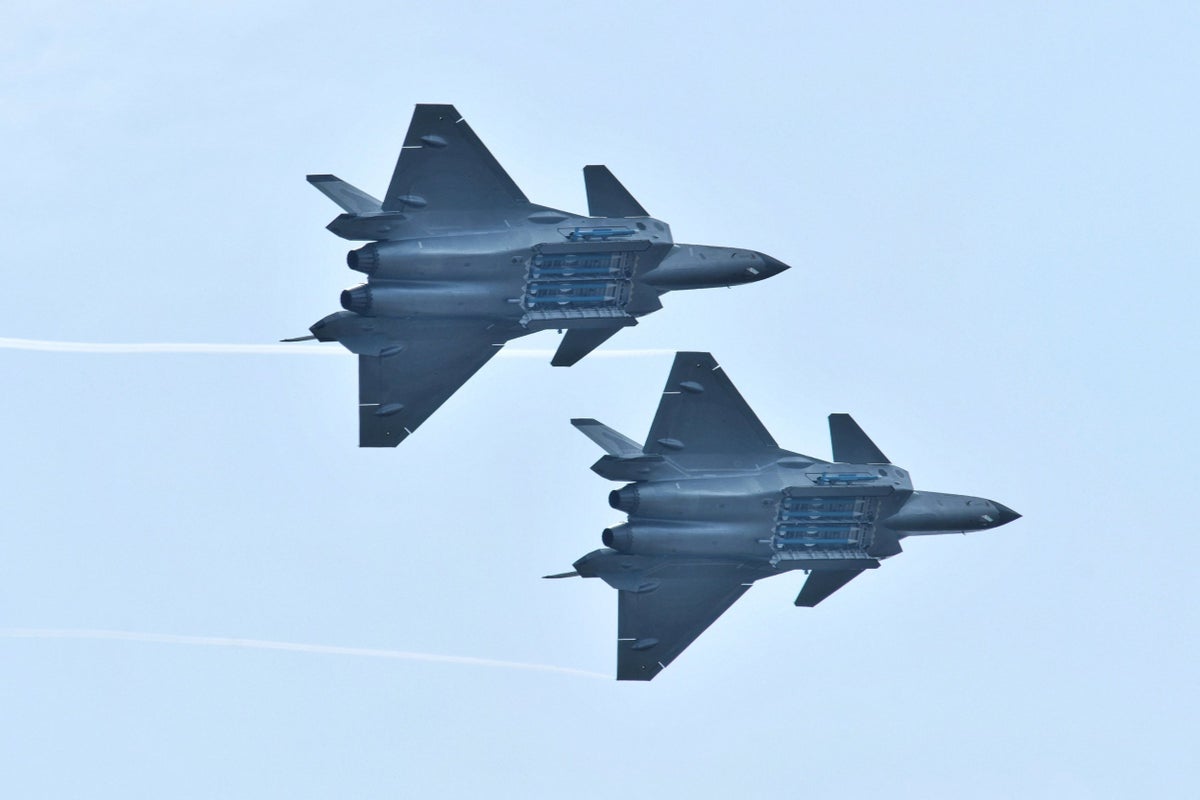
In December 2015, a low-rate initial production (LRIP) version of the J-20 was seen by military observers.
China To Speed Up Research Into New Strategic Weapons For Air Force: J 20 Chief Designer
The LRIP plane exposes the dielectric surface previously painted for the prototype, a vessel containing various ssors or baked radar absorbing material.
In October 2017, Chinese state media reported that the J-20 design had been finalized, and was ready for mass production and combat readiness.
In January 2019, Chinese media reported that a twin-seat version of the J-20 was rumored to be under development for use in strategic bombing, electronic warfare and carrier strike roles.
In November 2019, a J-20 painted with a yellow primer coating was spotted during its flight tests by defense observers at Chgdu Aerospace Corporation's manufacturing facility. The aircraft is equipped with a new version of the WS-10 Taihang gene with serrated afterburner nozzles to highlight it.
Blocked For Exports: Why China's Mighty J 20 Stealth Jet That Competes With Us' F 22 Raptor Is Banned For Sales?
Chinese media reported that a new version of the J-20, the J-20B, was announced on July 8, 2020 and went into mass production on the same day. The only proposed change would be to equip the J-20B with thrust vector control.
Conflicting reports appear about the exact type of gene. Analyst Andreas Rupprecht expressed doubts about the use of Russian engines in the J-20, as he believes the J-20 uses a variant of the WS-10, which he calls the WS-10C. This gen has increased thrust, a quieter serrated afterburner nozzle and higher reliability, but it is not designed for thrust vectoring, unlike the WS-10 TVC shown on the J-10 at the 2018 China International Aviation and Aerospace Exhibition.
Analyst Jamie Hunter believes the new type of gene, which he calls the WS-10B-3, is a Chinese-made thruster gene shown at the 2018 Zhuhai Air Show.
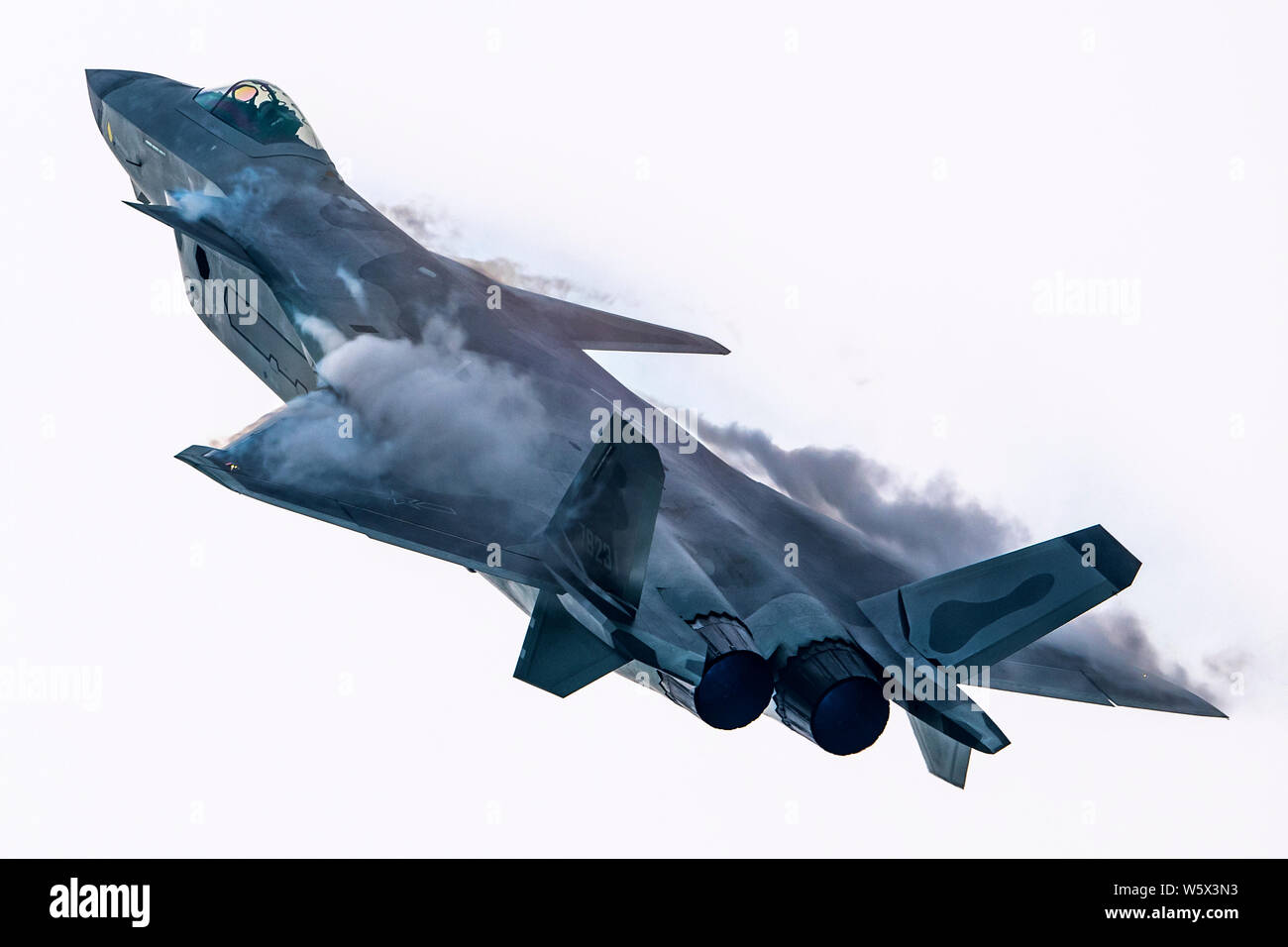
In January 2021, the South China Morning Post reported that China would replace the Russian engine in the J-20 stealth fighter with a Chinese engine called the WS-10C.
J 20 'mighty Dragon'
In June 2021, Chinese media confirmed that an aviation brigade had been tasked with an upgraded J-20A version incorporating the domestic WS-10C engine.
Although replaced, the WS-10C was considered another temporary solution before the Xian WS-15 passed evaluation. Additionally, the WS-10C will not be equipped on the J-20B, the mass-production thruster version of the J-20 in 2019, which still needs further testing. Overall, Chinese operators believe that the WS-10C is comparable in performance to the AL-31F,
In January 2021, the Aviation Industry Corporation of China released a computer order for a twin-seat version of the J-20 fighter jet in conjunction with the 10th anniversary of the jet's flight attendant.
In February 2021, a South China Morning Post infographic depicted a two-seat J-20 variant powered by WS-10C thrusters.
China's J 20 Fighter Can Get 'beastly' If It Has To
The twin-seat design allows a second operator to coordinate attack and reconnaissance missions from other aircraft via a "loyal wing actuator" system and network linked via ssors or unmanned combat air vehicles (UCAVs). The second operator's advantages include better interpretation of potial and exploitation of ssory ormous data that can strain the limited cognitive and processing capacity of humans, especially in competitive aerial warfare.
In December 2022, Chinese military analysts said the WS-15 was in the final stages of testing and development.
In late December, a prototype of the new J-20 version was observed at the Chgdu Aerospace Corporation facility. The new variant is painted in Flagship Yellow and differs from the previous J-20 aircraft in its airframe design, with a low profile composite canopy, intended to optimize transonic flight performance and maneuverability. The new prototype WS-15 can be used to test genes and thrust-vectoring.

The J-20 has a long, sweeping fuselage, chiseled nose and frameless canopy. Directly behind the cockpit is a less-noticeable supersonic inlet (DSI) with no diverter. A running canard surface with a pronounced dihedral is positioned behind the inlet, then moved forward with a leading edge extension that merges into the delta wing. The rear has movable twin wings, a short but deep ventral curve, and a conventional or low-notice cowl exhaust.
China's J 20 Fighter Jet Put Into Service
This requires sustained pitch power at high angles of attack, where conventional tailplanes would lose effectiveness due to stalling. Instead, the canard can rotate opposite the angle of attack, avoiding stall and maintaining control.
The canard design is also known to provide better supersonic performance, better supersonic and transonic turning performance, and better short field landing performance than conventional delta wing designs.
Advanced extensions and body lifts are combined to improve performance on canard layouts. This combination is said by designers to produce 1.2 times the lift of a typical delta canard and 1.8 times more than a pure delta configuration of equal size. The designers claim that such a combination allows the use of smaller wings, reducing supersonic drag without compromising the transonic lift-to-drag characteristics that are critical to the aircraft's turning performance.
The use of a bubble canopy, wide flight control surface, and canard configuration for angle of attack control indicate the J-20's air superiority and intent to conduct Gazemt missions at visual range. Chief test pilot Li Gang described the J-20 as having comparable maneuverability to the Chgdu J-10 while significantly better in low observable (LO) performance. The J-20 is a multi-role air superiority fighter, of which the interceptor role is only one option.
J 20 Stealth Fighter Hi Res Stock Photography And Images
The avionics of the J-20 is aimed at achieving situational awareness through a combination of advanced ssor while remaining dead to the enemy through situational awareness stealth and electronic warfare. The J-20 includes an integrated avionics suite comprising multi-spectrum ssors capable of providing omnidirectional coverage.
Official information about the type of radar used by the J-20 has not yet been released publicly. Some analysts believe that the J-20s use the Type 1475 (KLJ-5) active electronically scanned array (AESA) radar 1856 transmit/receive module,
Other analysts indicated that, based on known data about the nose cross-section of the J-20 and the surface of the single transmit/receive module in the J-16's AESA radar system, the J-20s could have 2000-2200 transmit/receive. module.
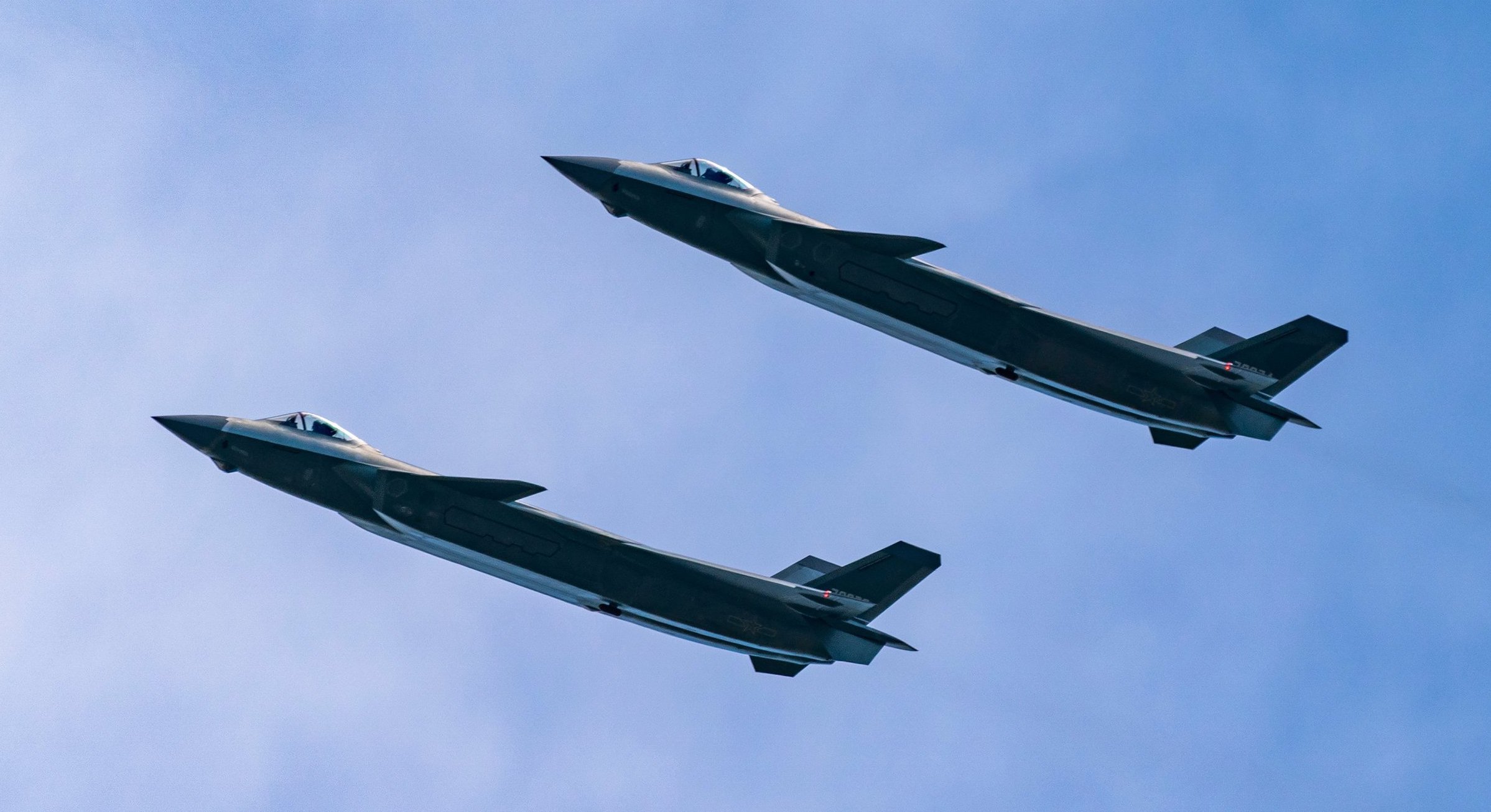
The "2011" post-application prototype and production model featured a revised nose section with an electro-optical/infrared targeting system and an advanced on-board communications suite, allowing data to be linked to other comfort platforms in service, such as airborne initialization. Warning drone. The six electro-optic ssors are called distributed aperture systems
Here's What Makes The Chengdu J 20 China's Mightiest And Fastest Fighter Jet
(like EODAS) can provide omnidirectional coverage for pilots with a ssor fusion system that combines radar signals with IR images to provide better situational awareness.
Similar to the Lockheed Martin F-35 avionics suite design concept, the combination of an integrated targeting pod with a spherically located passive-optical tracking system is reported.
Beijing A Star Science and Technology has developed the EOTS-86 electro-optical targeting system and electro-optical distributed aperture system for the J-20, and potentially other PLAAF fighters, to detect and intercept stealth aircraft.
The aircraft has a fully digital glass cockpit with one main large color liquid crystal display (LCD) touchscreen, three additional smaller displays and a wide-angle holographic head-up display (HUD).
Chengdu J 20 Enters Service With The Plaaf
Main LCD screen size 610 mm × 230 mm (24 in × 9 in), 650 mm (25.63 in) diagonal size, with two illumination systems for redundant operation.
The aircraft has a helmet-mounted display (HMD) system, which displays combat information within the pilot's helmet visor and the missile firing feature at a high external angle of vision.
The main weapons bay can accommodate both long-range air-to-air missiles (AAM; PL-12, PL-15 - PL-21) and precision-guided missiles (PGM; LS-6/50, LS-6/100). ),
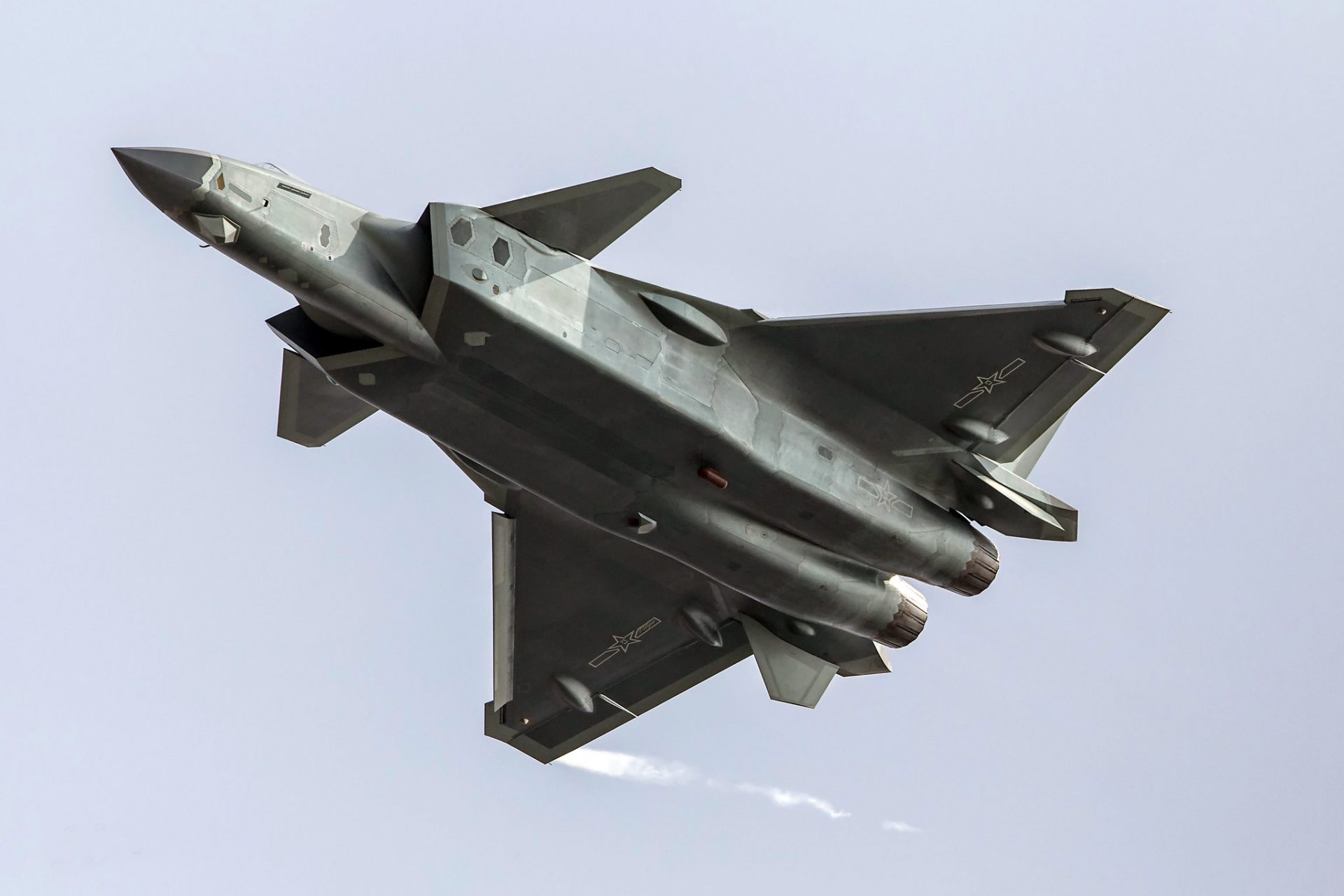
While two small side weapons bays behind the air intakes are intended for short-range AAMs (PL-10). This side chamber allows the chamber door to be closed before the missile is fired, preventing silence and allowing the missile to be fired in the shortest possible time.
Chinese J 20 Stealth Jet Based On Us Military Plans 'stolen' By Hackers Makes Debut
The J-20 is reported to have no internal autocannon or rotary cannon, suggesting that the aircraft was not used in close air combat with other aircraft but for long-range engagements with missiles such as the PL-15 and PL-21.
The J-20 will use an air-to-air missile to make measurements
J20 jet, chinese fighter jet j20, j20 fighter pakistan, china j20 fighter, ampeg jet j20, fighter jet j20, j20 stealth fighter jet, j20 fighter, j20 stealth fighter, chinese j20 stealth fighter jet, j20 fighter engine, chinese stealth fighter j20
0 Comments